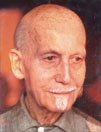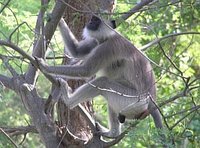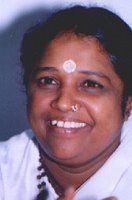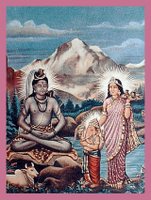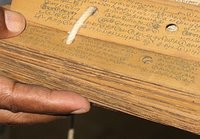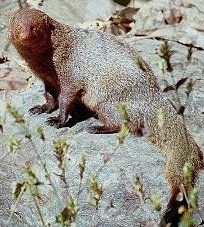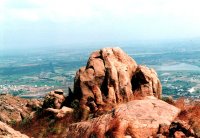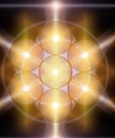 'During the Fall of 1946, Robert arrived by train to the town of Tiruvannamalai, a few miles from Arunachala Mountain, where lay Ramanashram and his future teacher, Ramana Maharshi. He took a bullock cart to the Ashram, was admitted, and stayed the night. Early the next day while walking back from the mountain, towards the Ashram, he spotted Ramana walking down the path towards him. An electrifying energy coursed through his body, and the last of what men call an ego left him. He felt completely surrendered, completely open. As Ramana got closer, Robert stripped off his clothes, approached Ramana and dropped to his guru's feet. Ramana reached down grabbing Robert by his shoulder, and looked into Robert's eyes with complete love and said, 'I have been waiting for you. Get up! Get up!' Robert said had Ramana asked him to leap over a cliff at that moment, he would have done so gladly.
'During the Fall of 1946, Robert arrived by train to the town of Tiruvannamalai, a few miles from Arunachala Mountain, where lay Ramanashram and his future teacher, Ramana Maharshi. He took a bullock cart to the Ashram, was admitted, and stayed the night. Early the next day while walking back from the mountain, towards the Ashram, he spotted Ramana walking down the path towards him. An electrifying energy coursed through his body, and the last of what men call an ego left him. He felt completely surrendered, completely open. As Ramana got closer, Robert stripped off his clothes, approached Ramana and dropped to his guru's feet. Ramana reached down grabbing Robert by his shoulder, and looked into Robert's eyes with complete love and said, 'I have been waiting for you. Get up! Get up!' Robert said had Ramana asked him to leap over a cliff at that moment, he would have done so gladly.Robert stayed at Ramana Ashram for a little over three years, during which time he bought a jeep for the Ashram to bring supplies from town, and helped build a large hospital at the Ashram using money from an inheritance.
. . . During the late 1940's, Ramana was almost constantly ill with severe arthritis and other ailments, including the cancer that eventually killed him. Few visitors were allowed to stay for more than a few weeks at the Ashram, so Robert lived mostly in the caves above, which also allowed him to avoid the crowds.'




